John Hurrell – 7 July, 2016
Looking at it as a frieze, albeit one influenced by Don Driver, Jacqueline Fraser (and maybe Giovanni Intra or Pip Culbert), we saw an unprepossessing Jesus flanked by six disciples on each side. In da Vinci's precursor version we had John, traditionally positioned on Christ's righthand side, replaced by Mary Magdalene. However Burt's fresh take on the theme went further: there was a skirt that indicated Mary; the only overtly ‘female' item of clothing in the assemblage.
Presented in the gallery that artist collective Terror Internationale have prepared adjacent to some of the founding members’ living quarters, Teghan Burt for Imaginary Party displayed two works in two rooms: Substitute for Mortals #2, a painting of a woman’s eyes, set like a frame in a strip of film with real moving clocks positioned in her irises; and Substitute for Mortals #1, a collage of life-sized items of clothing (ie. real garments) stitched onto a large suspended sheet.
The last work was particularly interesting. The clothes were arranged on the hanging sheet so that they looked like they were worn by (faceless and handless) standing people. They could have been a group of young students milling about, yakking, on the footpath. Or a police line-up, an identification parade of suspects. Or it could have been a punkish tip of the hat to art history, a reference to Leonardo da Vinci’s famous (long deteriorating) fresco, The Last Supper, 1498. It was all of these and more.
Scavenged from discarded items, or purchased in op shops or donated by generous friends, the sewn-on items of apparel did not represent the traditional image of thirteen sitting figures eating and talking around a long table. These people were standing vertically and mainly dressed in uni-sex items, such as hooded windbreakers, sweatshirts, and tracksuit pants, with no shoes or gloves. There was more clothing variety than you might initially have thought, with decorative flourishes such as sequined flag T shirts, fur trimming, tartans and camouflage patterns. There were also quite a few designer labels represented, such as Ralph Lauren and Moschino, and some items that looked worn, dirty and faded, were in fact in mint condition.
Looking at it as a frieze, albeit one influenced by Don Driver, Jacqueline Fraser (and maybe Giovanni Intra or Pip Culbert), you saw an unprepossessing Jesus flanked by six disciples on each side. In da Vinci’s precursor version you had John, traditionally positioned on Christ’s righthand side, replaced by Mary Magdalene. However Burt’s fresh take on the theme went further: there was a skirt that indicated Mary; the only overtly ‘female’ item of clothing in the assemblage. It served as a gender cipher, one that was quite conspicuous in the horizontal organisation of unisex clothing forms.
There was also a surprising amount of expressiveness in these ‘disciples’ indicated by fabric forms, particularly in the alignment of the hoods and upper torsos to indicate turning or looking towards the group, and the layering of clothing inside clothing (you could try the zips). Apart from creating variety it made the small community of a Baker’s Dozen more vibrant and energised, and opened up fresh interpretations: a Biblical story (the first Eucharist), and a self-reflexive Ponsonby / Newton / K Rd one too.
John Hurrell


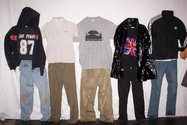
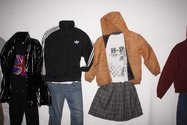
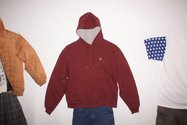
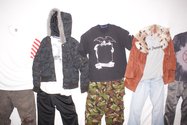
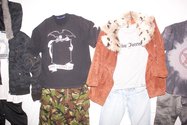

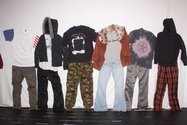
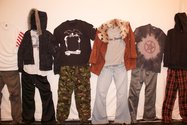
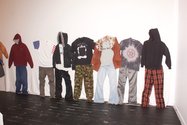
 Two Rooms presents a program of residencies and projects
Two Rooms presents a program of residencies and projects Advertising in this column
Advertising in this column



This Discussion has 0 comments.
Comment
Participate
Register to Participate.
Sign in
Sign in to an existing account.